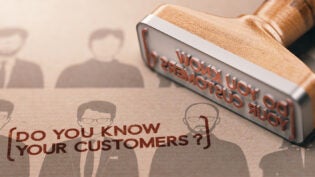
Not so long ago, every business assumed that the keys to success were the highest quality product, the best value for the buck, and the best customer service. Now all we hear about is providing the best “customer experience.” Exactly what is that customer experience that every modern marketer is talking about, and how do you measure it?
A classic article in the Harvard Business Review “The Truth About Customer Experience” defines it as your customer’s end-to-end journey with you, not just the key touchpoints or critical moments when customers interact with your organization. Customer experience is the cumulative impact of multiple touchpoints over time, which result in a real relationship feeling, or lack of it.
The advent of social media and real-time interactive feedback via the Internet allows every customer to build and expect a relationship with your business, rather than just touchpoints. Yet we are all still learning what that means, in terms of hard business practices.
I like the insights outlined in a more recent book “Summit,” by F. Scott Addis, who is an experienced business executive and recent Inc. “Entrepreneur of the Year” finalist. He ties business success and your personal summit to elevating your customers’ experience with the following specific recommendations and key differentiators:
- Listen to the individual customer. Every relationship requires listening, as well as talking. You have to hear your customer’s dreams, goals, passions, and aspirations. That opportunity for your customers to talk and be heard is pleasurable and memorable, and defines their customer experience, more so than just satisfying business touchpoints.
- Exploit your product and service differences. A memorable experience has to have something different from the norm. You must be able to highlight these differences between your products and services, and those of your competitors. If not, you are part of the crowd, and no relationship can be built.
Don’t talk about just another device added to your product line, but highlight how you have added new capability to connect easily to other ConnectKeydevices and customize the experience to fit unique needs across the business. - Demonstrate the value of your offering. The first step in being able to demonstrate your value is being willing to find out what your customers want or need. This will create a connection with them, which demonstrates more value than price or quality.
Show how production workflow softwareexpands customer reach, streamlines processes and reduce costs, rather than merely introducing the latest technology. You create a loyal customer that wants to buy from you, and will recommend you to others. - Show your passion and creativity in every solution. This active discovery mindset searching for new questions drives real innovators away from more of the same. They fundamentally become value seekers; they look for value in every experience, in every conversation.
Customers don’t want prescriptions – they seek possibilities. For example, make configuring your new office solution a transformational experience, rather than a technical installation challenge. - Demonstrate your personal commitment. When in contact with customers, focus 100 percent on them, and do all you can to determine and meet their needs. Remember, customers are the reason you do what you do. Give them the respect and results they deserve and they will tell others about your good work and your business.
- Shoot for the customers’ hearts. Engagement and an emotional connection will make a customer relationship the driving force for loyalty and differentiation. Move from customer friendliness to customer charisma. A business with charisma gives the customer something very special, and they want to tell others about it.
Once you know how to improve your customers’ experience, you need to also know how to benchmark it. Remember the old adage, “If you can’t measure it, you can’t manage it.” So how do you measure customer loyalty and relationships? One metric now commonly used is called the Net Promoter® Score (NPS).
This works by asking your customers for feedback, and dividing them into three categories:
- Loyal enthusiasts who keep buying from you and urge their friends to do the same.
- Satisfied but unenthusiastic customers who can be easily wooed by the competition.
- Unhappy customers who feel trapped in a bad relationship.
The formula for the Net Promoter® Score is the percentage of customers who are detractors, subtracted from the percentage who are promoters (NPS=P-D). Legendary companies like Amazon and Costco operate with an NPS between 50 to 80 percent. But the average venture sputters along at an NPS of only 5 percent to 10 percent, or even negative.
Maybe it time for all of us to focus more on the customer experience. There is ongoing evidence that companies with the highest customer experience typically grow at more than double the rate of their competitors. The inverse case is that you can lose you competitive lead very quickly by focusing on the wrong things. Have you checked your customers’ experience lately?












